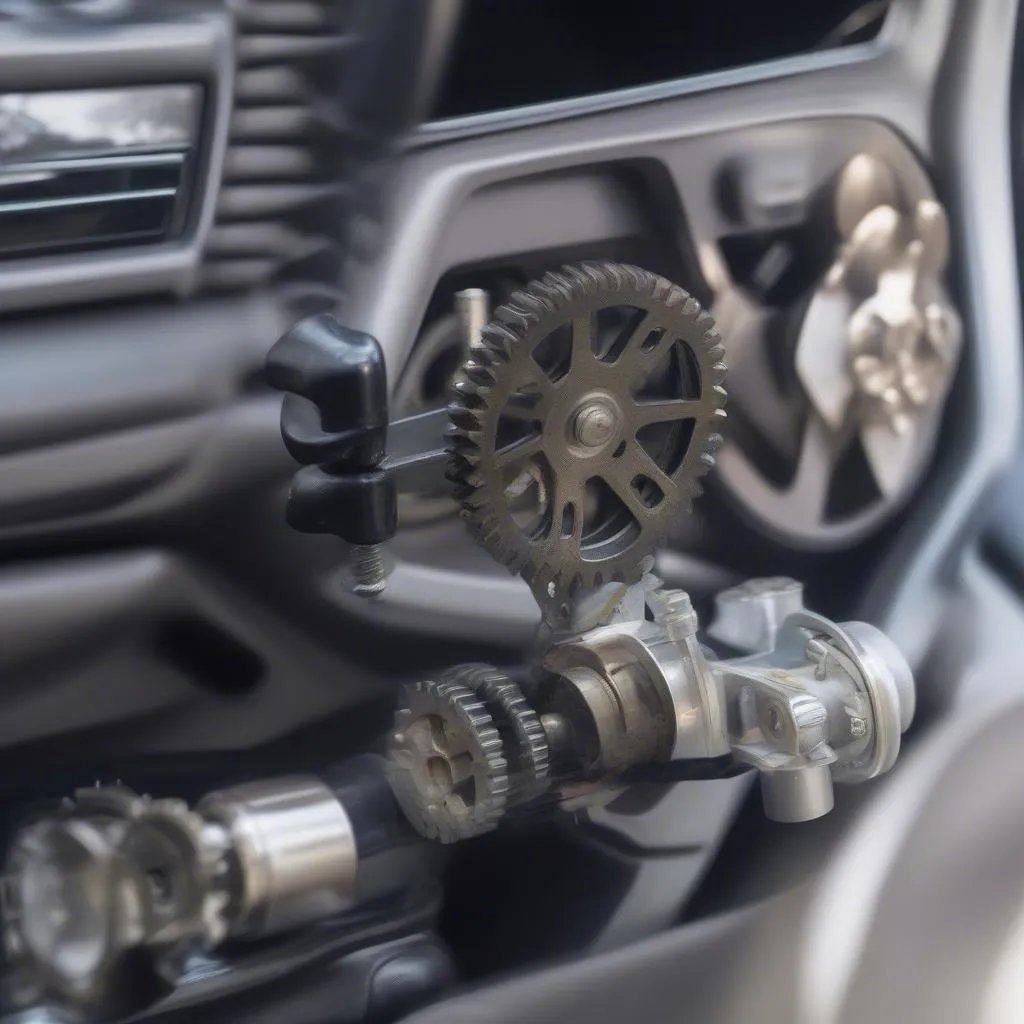Owning a vintage Mercedes is a point of pride, but time can take its toll, even on these meticulously crafted machines. One common issue you might encounter is a malfunctioning seatbelt. Whether it’s slow to retract, sticking, or refusing to latch, a faulty seatbelt is a safety hazard that demands immediate attention. This guide will walk you through the steps to diagnose and potentially fix the problem yourself.
Understanding Common Seatbelt Issues in Older Mercedes
Before you grab your toolbox, it’s important to pinpoint the root of the problem. Here are the most frequent culprits in older Mercedes models:
1. Twisted Seatbelt: Years of use can cause the seatbelt to twist, hindering smooth retraction.
2. Dirt and Debris: Dust, crumbs, and other particles can accumulate in the belt mechanism, causing it to jam.
3. Worn Retractor Springs: Over time, the springs responsible for retracting the seatbelt can weaken or break.
4. Faulty Seatbelt Buckle: The latching mechanism in the buckle itself can wear out or become damaged.
Identifying the Problem: A Hands-On Approach
To effectively fix your seatbelt, you need to determine the underlying cause:
- Visual Inspection: Carefully examine the seatbelt for any visible signs of twisting, fraying, or damage. Check the buckle for debris or misalignment.
- Retraction Test: Slowly pull the seatbelt all the way out and then let it retract. Note any hesitation, jerky movements, or complete failure to retract.
- Buckle Functionality: Fasten and unfasten the seatbelt several times to ensure the buckle mechanism engages and releases smoothly.
Tools and Materials You Might Need
- Screwdriver Set: Having a variety of sizes and types of screwdrivers is crucial, as Mercedes often uses Torx screws.
- Cleaning Cloth: A microfiber cloth will help you remove dust and grime effectively.
- Vacuum Cleaner (optional): Useful for removing debris from tight spaces.
- Replacement Parts: Depending on the problem, you may need a new retractor spring, buckle, or even the entire seatbelt assembly.
Fixing the Seatbelt: A Step-by-Step Guide
The repair process will vary based on the issue you’ve identified. Here are general guidelines for common problems:
1. Twisted Seatbelt:
- Unbuckle the seatbelt and pull it out completely.
- Carefully rotate the belt along its length to untwist it. You might need to do this several times.
2. Dirty Seatbelt Mechanism:
- Use a vacuum cleaner with a crevice attachment or a can of compressed air to dislodge loose debris.
- Dampen a microfiber cloth with a mild cleaning solution and gently wipe down the belt and the retractor mechanism. Avoid soaking the area.
3. Worn Retractor Spring or Faulty Buckle:
- These issues usually require replacing the entire seatbelt assembly. Consult your Mercedes owner’s manual or a professional mechanic for guidance on accessing and replacing these parts.
 Car Seatbelt Retractor Mechanism
Car Seatbelt Retractor Mechanism
Common Questions About Car Issues and Diagnostics
While this guide focuses on seatbelt repair, you might encounter other problems with your older Mercedes. Here are answers to some common questions:
Q1: My “Check Engine” light is on. Can a diagnostic tool like Cardiagtech help me understand the problem?
A: Absolutely! Cardiagtech products are designed to read and interpret your car’s onboard computer, providing you with valuable information about the potential issue triggering the “Check Engine” light. This can be extremely helpful in narrowing down the problem and deciding on the next steps.
Q2: I suspect my Mercedes might have an electrical issue. Can Cardiagtech tools diagnose those?
A: Yes, many CARDIAGTECH diagnostic tools offer extensive capabilities, including reading and analyzing data from various vehicle systems, including the electrical system. However, it’s essential to choose a CARDIAGTECH model compatible with your specific Mercedes model and year for the most accurate results.
 Mechanic Using Diagnostic Tool on Mercedes
Mechanic Using Diagnostic Tool on Mercedes
A Final Word
Maintaining the safety and reliability of your cherished Mercedes is an ongoing process. While this guide provides a starting point for fixing common seatbelt issues, always prioritize safety. If you’re unsure about any aspect of the repair or if the problem persists, don’t hesitate to consult a qualified Mercedes mechanic.

